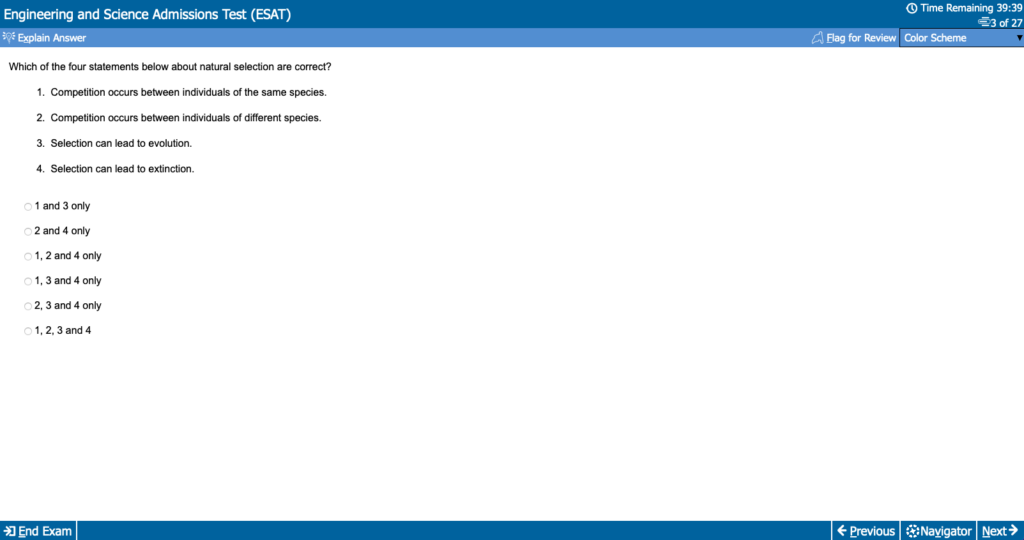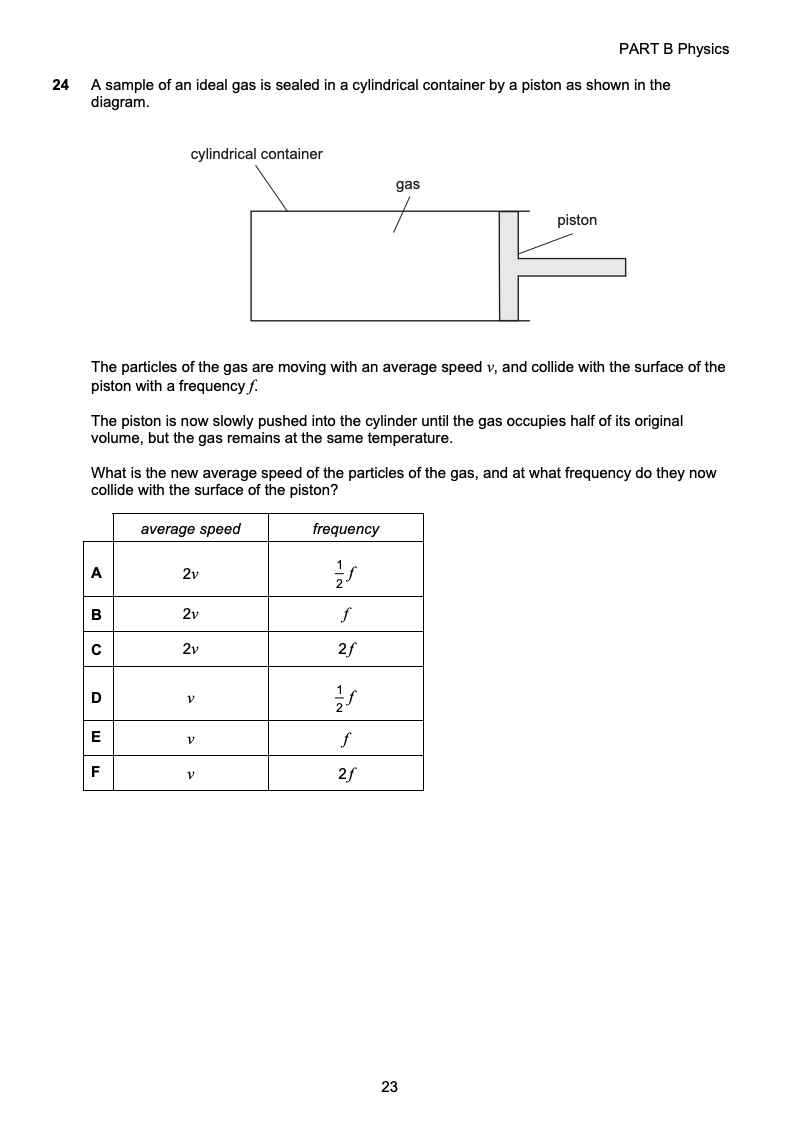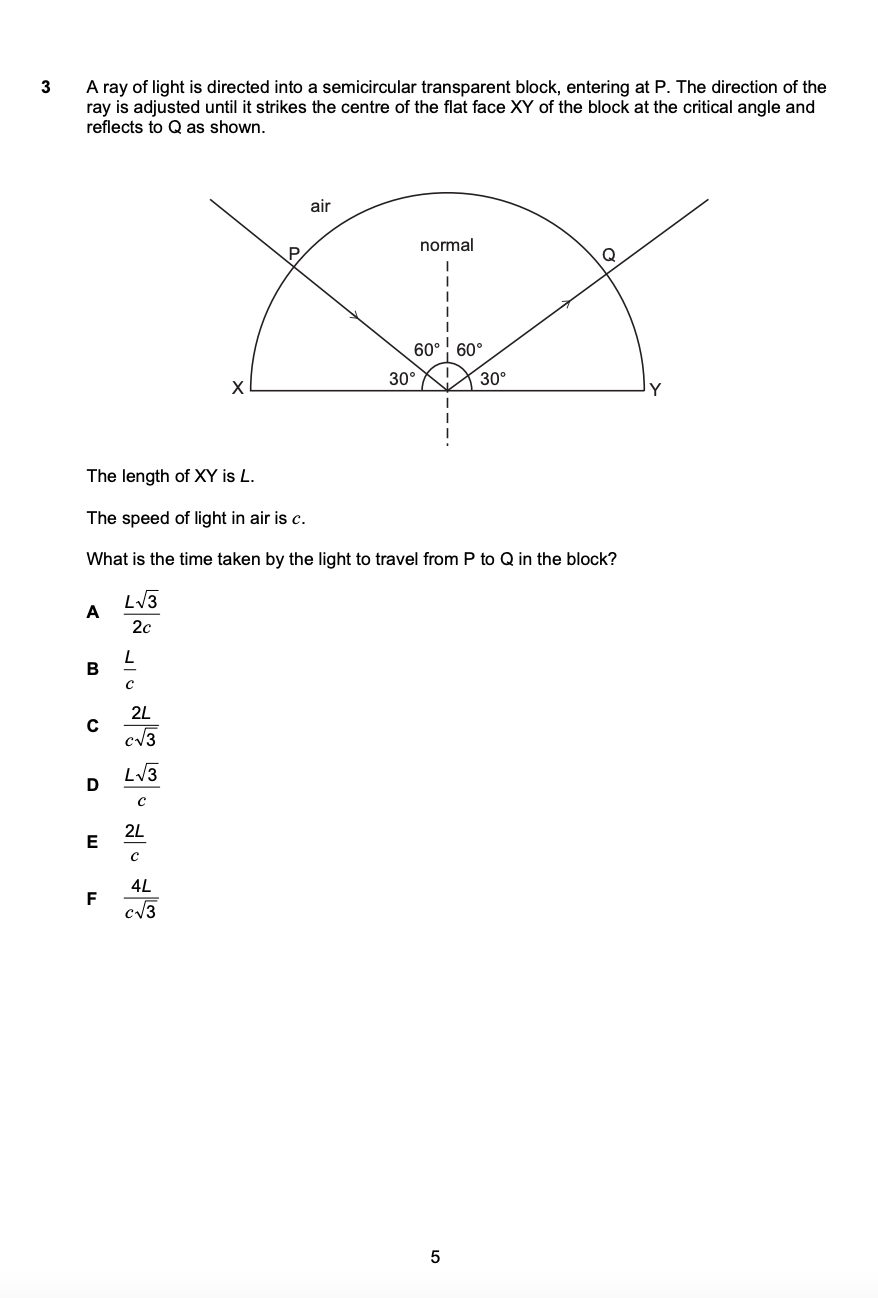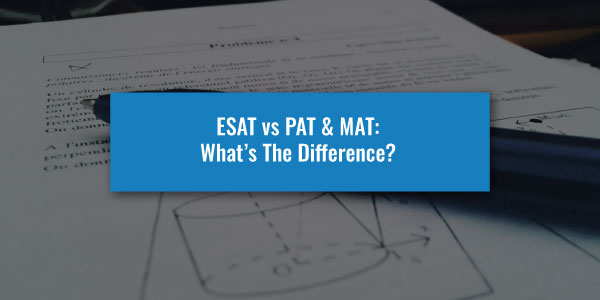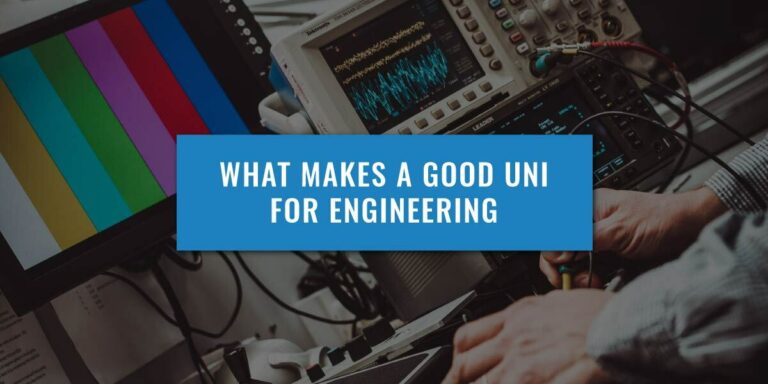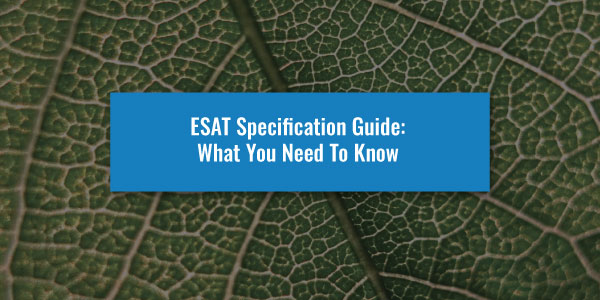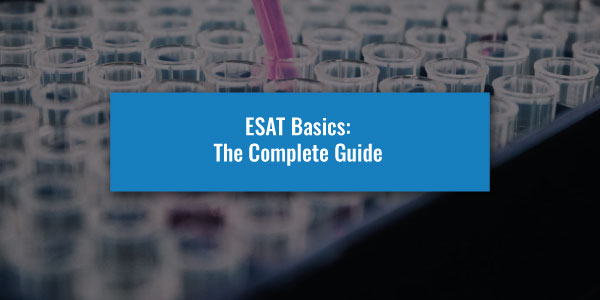In 2024, the Engineering & Science Admissions Test (ESAT) was announced as the successor to the Natural Sciences Admissions Test (NSAA) and Engineering Admissions Test (ENGAA) after their removal following the 2023 Cambridge admissions cycle.
With this change, many questions have been asked about how similar – or different – these tests will be from one another. With the release of the ESAT specification and official practice test, the comparison is now very easy to make. This guide will compare the old and new admissions tests to highlight all of the changes you need to be aware of and whether the older preparation materials for the NSAA and ENGAA are still relevant.
ESAT Changes: An Overview
The differences between the ESAT and the NSAA/ENGAA can be split into four major categories:
The ESAT will be used by more universities than just Cambridge, with Imperial College London being the first to implement it.
The format of the ESAT has changed from a two-section exam to five distinct subtests, three of which must be taken.
The ESAT is computer-based rather than paper-based, which presents a few major changes to consider.
The ESAT spec is very similar to the NSAA, though the requirement for advanced science knowledge has been removed.
Let’s dive a little deeper into each of these changes so that you are aware of what is and isn’t required for the ESAT.
Be prepared for the ESAT with expert support from UniAdmissions
With over ten years of experience, UniAdmissions has developed the ultimate formula for Oxbridge success, no matter the admissions test. Using a combination of one-to-one tuition, live intensive courses and comprehensive materials, we will prepare you for every step of the Oxbridge application process.
Discover our Cambridge Natural Science Premium Programmes below and find out how you can enrol and triple your chances of success.
ESAT Usage Changes
The NSAA and ENGAA were both Cambridge-exclusive exams, being used for the the following courses:
ENGAA Courses
The ESAT will still be required for all of these Cambridge courses, though there is not a separate test for Engineering applicants. Instead, Engineering applicants will not be given a choice of subtests to complete (more on this soon).
These tests were only used in the Cambridge admissions process, but the ESAT will be required by other universities. Specifically, Imperial College London was announced to be implementing the test as part of the initial ESAT announcement. Applicants for the courses in the following departments at Imperial will be required to sit the test:
In a press release from Pearson VUE, the director of University Admissions Tests UK (UAT), who will be operating the ESAT, stated the following:
“We are excited about the number of universities that have already shown interest in using both the TMUA and the ESAT for the 2026 application cycle and beyond”
With this quote, we can assume that other universities have taken an interest in utilising the ESAT in their admissions processes in some form, so it’s likely that we’ll see more universities either requiring or accepting the ESAT in future admissions cycles.
ESAT Format Changes
The NSAA and ENGAA had different formats from one another and the ESAT has differences from each, so let’s take a look at the format changes compared for each of these exams:
ESAT vs NSAA - Format:
The NSAA was split into two sections, which were further split into separate parts. The format was as such:
NSAA Section 1
- Part A: Mathematics
- Part B: Physics
- Part C: Chemistry
- Part D: Biology
NSAA Section 2
- Part X: Advanced Physics
- Part Y: Advanced Chemistry
- Part Z: Advanced Biology
There were seven parts in total covering the three core sciences, mathematics and the advanced variants of each science. This test was used for Cambridge Natural Sciences, so having a wider range of covered subjects was important.
All applicants were required to complete Part A but would then have the choice to complete one of Parts B – D and one of Parts X – Z (no additional marks were gained for completing questions in extra parts. There would be 20 multiple-choice questions in each part.
Timings in the NSAA were not determined by part but by section, with applicants having 1 hour per section, 2 hours in total. In Section 1, time spent between the two parts could be allocated however the applicant saw fit, although time did not carry over between Sections 1 and 2.
It’s clear that the ESAT is heavily inspired by this format, but there are a variety of small differences that will alter how applicants approach the test.
Firstly, there are no longer sections in the ESAT, although the test is still split into parts, or subtests. In the ESAT, there are now five parts covering science and mathematics:
ESAT Parts
- Mathematics 1
- Mathematics 2
- Physics
- Chemistry
- Biology
There are two fewer parts than the NSAA. This is because of the removal of the three advanced science parts and the addition of Mathematics 2, which is essentially an advanced mathematics part. Applicants are still required to take Mathematics 1 and must choose two additional parts to take, just the NSAA.
However, each part now has its own time limit of 40 minutes, rather than the 1-hour time limit for sections in the NSAA. There are also more questions in the ESAT, with 27 questions per part rather than 20, although they are still multiple-choice. The time between each part does not carry over to the next.
The one element that has remained relatively consistent between the two tests is the scoring system. Single questions in each test are worth one mark, which are added together and converted into a score on a scale between 1.0 and 9.0. There is also no negative marking in either test. The only element of scoring that will be different is the conversions between raw marks and final scores, as the ESAT has more marks to consider.
Below is a summary of the changes between the ESAT and NSAA:
| Exam | ESAT | NSAA |
|---|---|---|
| Sections/Parts | 5 Parts | 2 Sections (7 Parts) |
| No. Required Parts | 3 Parts | 3 Parts (Section 1 – 2 parts, Section 2 – 1 part) |
| Questions per Part | 27 Questions | 20 Questions |
| Time Limits | 40 mins per part | 60 mins per section |
| Scoring System | Raw marks converted into a scale from 1 – 9 | Raw marks converted into a scale from 1.0 – 9.0 |
ESAT vs ENGAA - Format:
The ENGAA was a far simpler test than the NSAA as it was dedicated to a single subject, Engineering. In the ENGAA, there were two sections consisting of three parts, all of which were required to be completed.
ENGAA Section 1
- 1A - Mathematics & Physics
- 1B - Advanced Mathematics & Physics
ENGAA Section 2
- Advanced Physics
Each part had 20 multiple-choice questions, making 60 in total. The only subjects covered were mathematics and physics, although Section 1 features a mixture of both maths and physics questions in each part.
While the ESAT format isn’t changed for ENGAA, Cambridge Engineering applicants do not get to select which parts they take, emulating the ENGAA’s format. These applicants must take Mathematics, Mathematics 2 and Physics in their ESAT, which is different from the ENGAA as subjects are split into individual parts rather than being mixed together, as seen in Section 1 of the ENGAA. Advanced Physics is also replaced with Advanced Mathematics (Mathematics 2).
There are still seven more questions per part in the ESAT, meaning applicants will be answering 21 extra questions overall.
The scoring system for the ENGAA was the same as the NSAA, meaning it’s also the same as the ESAT. Below are the changes and similarities between the ESAT and ENGAA formats:
| Exam | ESAT | NSAA |
|---|---|---|
| Sections/Parts | 5 Parts | 2 Sections (3 Parts) |
| No. Required Parts | 3 Parts | 3 Parts (Section 1 – 2 parts, Section 2 – 1 part) |
| Questions per Part | 27 Questions | 20 Questions |
| Time Limits | 40 mins per part | 60 mins per section |
| Scoring System | Raw marks converted into a scale from 1 – 9 | Raw marks converted into a scale from 1.0 – 9.0 |
Access "The Big Book Of Oxbridge Applications" For FREE
The ESAT isn’t the only thing you need to be prepared for in your Cambridge application. Discover everything you need to know in The Big Book Of Oxbridge Applications, available for free here! Through over 350 pages, you will find:
- Over 40 admissions test practice questions
- 28 example Oxbridge Personal Statements
- Interviews with Oxbridge students and graduates
- Additional downloadable resources
Fill in your details below to claim your digital copy today!
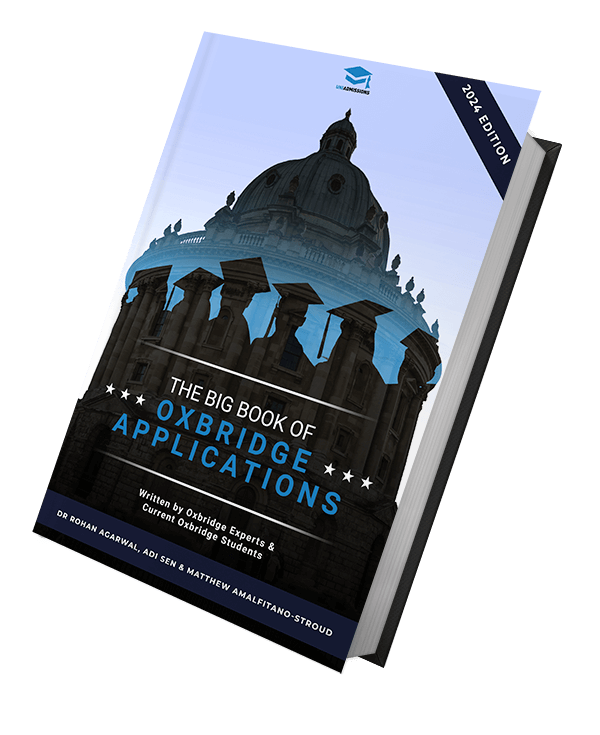
ESAT Presentation Changes
The presentation of the ESAT is potentially the biggest departure from the NSAA and ENGAA. This is because the ESAT is fully computer-based, compared to the older tests which were traditionally paper-based. This change in the system means that the ESAT feels very different to complete.
The ESAT is run on the testing system developed by Pearson VUE, and functions almost identically to the University Clinical Aptitude Test (UCAT), another Pearson VUE computer-based admissions test. Below you can see a screenshot of the system.
ESAT Testing Platform
As you can see, the answer options are selectable check boxes and there are a variety of features along the top and bottom of the page. These include navigation options, a timer and an option to change the system’s colour scheme (the “View Solution” option will not be included on the actual test, this only appears on the practice test that this screenshot is taken from).
Meanwhile, the NSAA and ENGAA were spread across multiple papers, including two question papers (one for each section) and an answer sheet.
These papers featured all of the questions in the test for that year, which is different from the ESAT, which will only display the questions from the parts you’re taking. This is generally better as it means you won’t accidentally complete any questions you’re not meant to.
However, there are more differences than this. Firstly, and more obviously, completing a computer-based test requires various different skills compared to a paper test. There are some key advantages to computer testing, such as the ability to quickly and easily change your answer, compared to having to erase your answers on paper.
The computer testing system also has a number of unique features that make testing easier, including an accurate timer that counts down how much time you have left, a review screen that lets you see your progress through the entire part and a flagging feature to clearly highlight pages you want to come back to. All of these things were possible with paper, but the computer system makes everything a little bit more convenient.
However, computer testing isn’t ideal for everyone. Looking at screens for an extended period of time may be uncomfortable for some, which can end up slowing their progress and affecting their score. There’s also the issue of working out, which is impossible to do on the computer system. You should still be given paper to complete rough work, but this may feel more clunky than working on the actual question paper.
It’s important to note that calculators and other supporting materials have never been allowed in the NSAA or ENGAA, and they also won’t be allowed in the ESAT.
The main takeaway from this is that you should learn to use the computer system effectively before your testing date. While it isn’t going to make a huge difference, being able to quickly navigate the system will save you small amounts of time throughout the test and could be the difference between getting a few extra marks or not.
ESAT Specification Changes
Lastly, we have the ESAT Specification. This is the least changed element of the test out of everything we’ve discussed, although it’s still important to understand the differences.
For the most part, the ESAT specification is identical to the NSAA (the ENGAA’s specification was also the same, minus the Chemistry and Biology Sections). You can learn more about the ESAT Specification content in our ESAT Specification Guide.
The primary change in the ESAT is that there is no more Advanced Physics, Chemistry or Biology. These sections have been completely omitted from the ESAT specification, so you won’t need to be prepared for anything from these parts.
However, the Advanced Mathematics portion of the NSAA specification remains, being covered in Mathematics 2. Not only this but it has also been upgraded to a full part, as there was no dedicated Advanced Mathematics part in the NSAA or ENGAA despite featuring in the specifications. It was included there to act as a guide for the mathematical knowledge you would need to answer the other advanced parts.
The only other change to note is the addition of one sentence in the Mathematics 2 specification for the ESAT. Under MM8.2 (Graphs of Functions), the following has been specified:
“Knowledge and use of the notation f ( g (x))”
This wasn’t featured in the NSAA or ENGAA specifications, so you should keep this in mind. However, there isn’t really any reason to be using these older specifications, as the most recent ESAT specification is easily available to access.
So that covers all of the major differences between the ESAT and NSAA/ENGAA that could impact your preparation. However, there’s one question that you may be wondering that we’d like to address:
Can I Use NSAA/ENGAA Resources For The ESAT?
Yes, you can. However, you will want to consider how you use them, as the tests aren’t one-to-one with each other. Firstly, using NSAA and ENGAA past papers to complete mock exams may be helpful to you, but there are various differences that will make this method of preparation less effective:
- The NSAA/ENGAA past papers aren’t in a computer format, so the testing experience will be different (some non-official question banks have converted these papers into a computer format similar to the ESAT).
- Content Section 2 of the NSAA and ENGAA is not included in the ESAT (excluding advanced mathematics, which does not have a dedicated part in either exam).
- The number of questions and time limits for each part are different in the ESAT compared to the NSAA/ENGAA.
For these reasons, it will usually be better to use NSAA and ENGAA past papers to gather practice questions rather than completing the whole test.
NSAA/ENGAA question banks, books and guides are still very relevant to the ESAT for the most part, as the specification and question structure are almost identical. This means that revision and practice materials like these are still going to be very useful.
In fact, Pearson VUE actually encourages applicants to prepare with older resources, as they have provided a bank of NSAA and ENGAA past papers on the official ESAT website. Considering that the only official ESAT preparation materials currently available are the five practice tests made available on their site, seeking out these additional materials will be very valuable.
Keep in mind that some external services have already developed specific ESAT practice materials, including UniAdmissions, which has published an ESAT book and developed an ESAT question bank. Both of these resources are available as a part of the ESAT Programme, which also features one-to-one tuition, a live ESAT course and much more.
That concludes our look at the ESAT versus the NSAA and ENGAA. While there are a lot of differences between the exams, there are just as many similarities which make them far less distant from each other. We hope that this guide has helped you understand what is and isn’t suitable for your ESAT preparation so you can make the most of the time you have available.
If you’re wondering how the ESAT compares to Oxford’s two major STEM admissions tests – the PAT and MAT – check out our ESAT vs PAT & MAT Guide to see which exam of these exams would suit you best.
We wish you the very best of luck with your ESAT and invite you to check out our other ESAT guides, including our exam overview. Thank you!
Dedicated support for the ESAT and the rest of your Cambridge application
At UniAdmissions, we’ve developed resources dedicated to the ESAT to ensure that our students are prepared for the new test. You can join our cohort of Cambridge applicants and gain access to expert resources and tuition time with top-scoring Cambridge students.
Discover our Cambridge Natural Science Programme below and find out how you can enrol and triple your chances of success.

